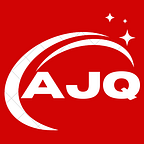Total Quality Management Models
Total Quality Management or TQM happens due to the tandem between the management and the employees. It enables workers to concentrate on quality and to go all-out to shine in whatever they do. According to TQM, customer feedback and expectations are very important when formulating and implementing new strategies. A lot of management gurus have contributed to the concept of TQM. They are Drucker, Juran, Deming, Ishikawa, Crosby, Feigenbaum, and many others. Many models of TQM exist. One glove doesn’t fit all. Organizations need to know which one they should select as per their environment and business practices.
The models of total quality management:
- Deming Application Prize
- Malcolm Baldrige Criteria for Performance Distinction
- European Foundation for Quality Management
- ISO Quality Management Standards
TQM starts with understanding customers, their needs, and their expectations. The customer data must be collected meticulously. Data collection methods should be foolproof. This helps to understand the target customers and their behavior. Business marketers need to know the demographics of the customers along with their needs and expectations. They must fully know their products in terms of customer needs and demands. TQM demands meticulous planning and research. It integrates customer feedback with relevant information. This helps to plan and design effective strategies to achieve high-quality goods.
These strategies must be evaluated and reviewed periodically. Customers are satisfied when products meet their expectations and are good value for their money. Their experience with the organization must be pleasant. This ensures repeat business. Nonstop improvements and modifications in the current processes are necessary to yield higher profits. Processes can’t be the same forever. If a customer complains, find out the cause of the problem. Rectify the problem by using the correct TQM model. This ensures a high-quality product. Without the contribution of each and every employee, TQM would fail.
Quality Management Tools
Quality Management is used to collect and analyze data to comprehend and infer information. These models require widespread planning and gathering pertinent information about the end-users. Customer feedback and expectations need to be observed and assessed to deliver top-end products.
Quality Management tools help to identify problems that are occurring repeatedly along with their root causes. Quality Management tools improve the products and services. Workers can easily collect the data as well as organize it. This results in a good analysis of the same. Subsequently, concrete solutions are devised for better-quality products. The following are QM tools:
- Checklist
- Pareto Chart
- Fishbone Diagram
- Histogram
- Scatter Diagram
- Graphs
What is Kaizen? — The 5 S of Kaizen
“Kaizen” is a Japanese word meaning “improvement” or “a good change.” Kaizen is a continuous effort by each and every employee to improve all processes and systems of a business. If you ever work for a Japanese company, you will understand the importance that they give to Kaizen. Kaizen helps Japanese companies to outshine their rivals. They religiously adhere to a certain set of policies and rules to eliminate defects and ensure superior quality thereby gaining customer satisfaction. Kaizen works on the following principle.
“Change is for the better.”
Kaizen is the “continuous improvement of processes and functions through change”. It brings continuous small improvements in the overall processes. The Japanese feel that small continuous changes in the systems and policies are better than Major changes. It aims at continuous improvement of processes in manufacturing and all other departments. Kaizen is a collective responsibility of all who are linked with the organization. Every individual needs to contribute through small improvements & changes in the system.
Five S of Kaizen
The “Five S” is a systematic approach for foolproof systems, standard policies, rules, and regulations for a healthy work culture. You would hardly find a Japanese worker unhappy or dissatisfied. Japanese employees never foul mouth about their organization. Kaizen makes a well-organized workplace. This improves productivity and yields better results. It nurtures employees to feel connected to the organization. Let us know the five S. They are:
- SEIRI –This means “Sort Out”. Workers are expected to sort out their things. Label the items as “Necessary,” Critical,” “Most Important,” “Not important now”, “Useless” and so on. Get rid of all useless stuff. Keep aside what is not needed at present. Critical stuff must be kept safe.
- SEITION –This means “Organize”. Workers waste precious time searching for items and important documents. Every item should have a designated place.
- SEISO –This means “Shine the workplace”. The workstation should be clutter-free and clean. Filing should be done properly. Drawers and cabinets should store your organized items.
- SEIKETSU-SEIKETSU — This means “Standardization”. All businesses have rules, procedures, & policies to ensure superior quality.
- SHITSUKE –This means “Self-discipline”. Never work in casuals. Follow all procedures and always carry your identity cards. It gives you a sense of pride and shows your attachment to the organization.
